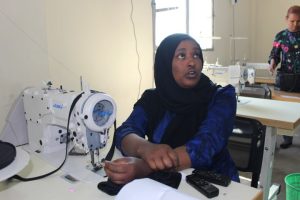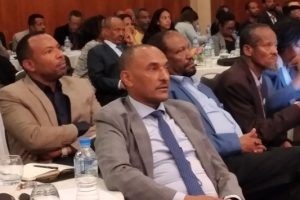
Apart from the primarily goals of addressing local environmental challenges, Ethiopia’s climate actions are benefiting regional countries in terms of stabilizing water flows and reducing the risks of floods and droughts. Launched in 2019, the Green Legacy Initiative has been receiving gestures of appreciation from several international organizations for the positive impacts it has brought at national and regional level, according to the Ministry of Water and Energy.
In his speech during the first Ethiopian Hydromet conference held in Addis Ababa on 4 November 2024, the World Meteorological Organization President Abdulla Ahmed Al Mandous had praised Ethiopia’s commitment for proactive measures to combat climate crisis.
Legacy are instrumental in addressing the hydrological imbalances caused by climate change, especially in regions like Africa, which is warming faster than other parts of the world. Similarly, Kenyan National Water Harvesting and Storage Authority Executive Officer, Julius Mugun also echoed the need of regional collaboration to combat the climate crisis and to widen early warning data sharing. Forestry Initiatives implemented by Eastern African countries, including by Ethiopia and Kenya, are important but not sufficient, according to him.
The need to improve forestry campaigns makes the Green Legacy Initiative one of critical environmental movement changing the trajectory. With substantial effects on both the country’s ecological landscape and its water resources, the initiative has risen to 23.6 percent, proving the possibility overveiling deforestation and controlling soil erosion within few decades.
Ethiopia has long been vulnerable to soil erosion, particularly in areas like the Abbay (Nile) Valley, where environmental degradation has been severe. The afforestation efforts under the Green Legacy Initiative have started to restore these degraded landscapes, with an estimated four to five percent of the Abbay Valley’s gorges being reforested. This restoration helps to stabilize the soil and prevent further erosion, making the land more productive and sustainable for future generations, Water and Energy Minister, Eng. HabtamuItefa said.
Over the past six years, Ethiopia has planted more than 40 billion trees, a foundation that has not only improved forest coverage, but has also laid a significant influence on water availability and climate resilience, he noted. One of the most evident impacts of the Green Legacy Initiative has been on the recovery of water resources. The Green Legacy initiative efforts have contributed to a nine percent increase in water flow in key basins, including the Nile, the Rift Valley, and the Awash Basin. This increase has benefited not just Ethiopia but also downstream countries like Sudan and Egypt, according to the Minister.
Apart from the primarily goals of addressing local environmental challenges, Ethiopia’s environmental initiatives are benefiting regional countries in terms of stabilizing water flows and reducing the risks of flooding and droughts.
Deputy Prime Minister Temesgen Tiruneh, during the recent Hydromet conference, emphasized the importance of the Initiative in combating climate change. While Africa is disproportionately affected by the climate crisis, Ethiopia’s initiative serves as a beacon of hope and a symbolic gesture towards changing the trajectory of environmental degradation and addressing the challenges posed by climate change.
Beyond taking proactive measures, Ethiopia is expanding its capabilities of generating and distributing meteorological data with the support of international partners. A new project aims to install 13 new metrological stations and to upgrade 16 existing stations, has already been launched earlier this week with financial fund of the World Meteorological Organization, the United Nations Development Program, and the Norwegian Meteorological Institute.
BY YESUF ENDRIS
THE ETHIOPIAN HERALD SATURDAY 9 NOVEMBER 2024





